Madagascar Baobab Tree
- October 11, 2023
- 0 comment
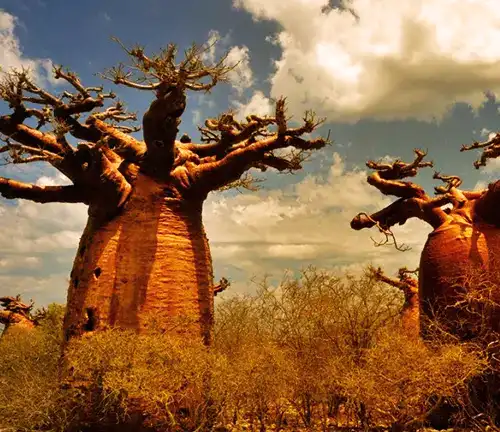
The Adansonia madagascariensis, commonly known as the Madagascar Baobab Tree, stands as an emblem of a botanical marvel within the verdant landscapes of Madagascar. Its distinctive features include a robust, bottle-shaped trunk and an expansive canopy, creating a silhouette that is both imposing and graceful. Indigenous to Madagascar, this species has adapted to a range of ecosystems, thriving in environments from dry forests to savannas. Beyond its aesthetic allure, the Madagascar Baobab plays a pivotal role in the intricate tapestry of the local ecosystem. The tree’s fruit, often referred to as “monkey bread,” is a nutrient-rich source, serving as a critical sustenance for a diverse array of wildlife, as well as being harvested by local communities for its nutritional benefits.
Culturally, the Baobab is deeply ingrained in Malagasy traditions, featuring prominently in myths and local practices. Beyond its role as a symbol and a food source, the Baobab also contributes to traditional medicine, with its bark and leaves being utilized for various remedies. However, the Madagascar Baobab faces challenges, including habitat loss and the impacts of climate change, necessitating concerted conservation efforts to ensure the perpetuation of this unique species and its vital ecological and cultural contributions to Madagascar’s rich biodiversity.
| Characteristic | Description |
| Scientific name | Adansonia madagascariensis |
| Plant type | Deciduous tree |
| Hardiness zones | 10-12 |
| Height | 5 to 20 m (16 to 66 ft) t |
| Trunk Shape | Robust, bottle-shaped |
| Growth rate | Slow |
| Sunlight requirements | Full sun |
| Soil type | Well-drained, sandy soil |
| Water requirements | Drought-tolerant, but benefits from regular watering during the growing season |
| Habitat | Madagascar’s diverse ecosystems (dry forests, savannas) |
A Brief History

The Madagascar Baobab Tree, scientifically known as Adansonia madagascariensis, is a botanical marvel deeply rooted in the history of the island nation. This remarkable species is an integral part of Madagascar’s rich biodiversity, offering a glimpse into the island’s natural heritage and the stories it holds.
Color/Appearance
With its distinctive, bottle-shaped trunk and an expansive, umbrella-like canopy, the Madagascar Baobab Tree presents a striking appearance in the landscape. Its trunk often displays shades of grey and brown, adorned with a weathered, textured bark that bears witness to the tree’s age and resilience.
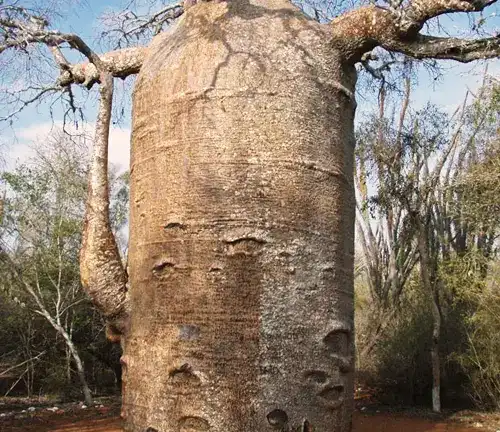
Unique Features
What sets the Madagascar Baobab apart are its remarkable features, including its bulbous trunk, which can reach impressive proportions, and a canopy that provides a unique backdrop to the island’s landscapes. These distinctive characteristics have earned it a special place in the world of botany.
Ecological Importance
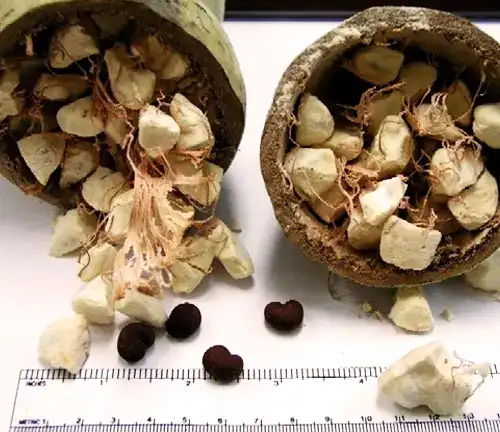
The Madagascar Baobab is a vital contributor to the island’s ecosystem. Its nutrient-rich fruit, known as “monkey bread,” serves as a crucial source of sustenance for a diverse array of wildlife, from lemurs to birds. Its role as a keystone species underscores the interconnectedness of life on the island.
Adaptation and Resilience
This species has proven its adaptability to the challenging environmental conditions of Madagascar, thriving in various ecosystems, from dry forests to savannas. Its ability to endure the rigors of nature reflects its resilience and tenacity.
Cultivation and Care
Caring for Madagascar Baobab Trees is a complex task, as these trees have unique requirements. Conservationists and local communities are working together to ensure that these iconic trees continue to thrive.

Wood Products and Applications
The wood of the Madagascar Baobab Tree, though relatively soft, has been utilized for various purposes, including traditional carvings, utensils, and even musical instruments. Its versatility is a testament to its resourcefulness.
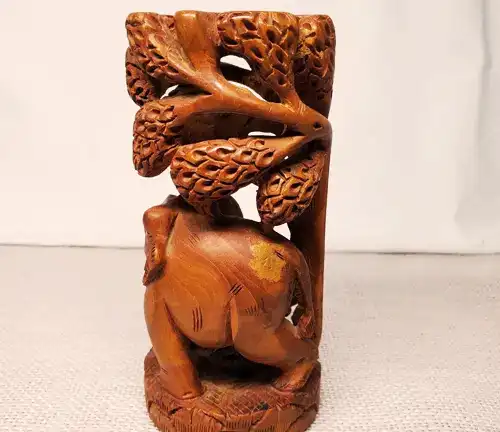
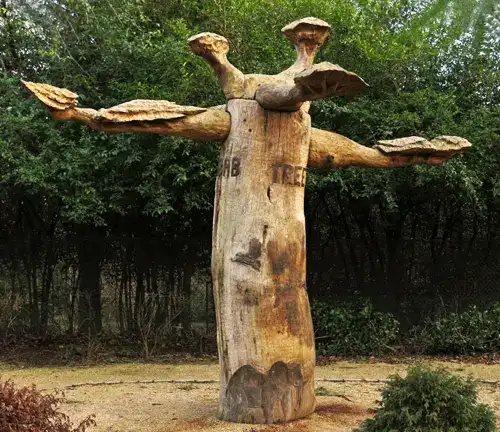
Other Uses
Beyond its wood, the tree offers additional resources. Its bark and leaves have found applications in traditional medicine, demonstrating its multifaceted role in Malagasy society.
Threats and Conservation
The Madagascar Baobab faces a multitude of threats, from habitat loss due to agriculture and logging to the adverse impacts of climate change. Conservation efforts are essential to protect this iconic species and the intricate web of life it supports.
Benefits
The benefits of preserving the Madagascar Baobab extend far beyond the tree itself. Conservation ensures the survival of countless other species, the maintenance of local traditions, and the safeguarding of the island’s unique ecological balance.
Conclusion
The Madagascar Baobab Tree stands as a symbol of Madagascar’s natural and cultural heritage. As we appreciate its unique features and the role it plays in the ecosystem, it becomes clear that this remarkable tree is not only a botanical wonder but a testament to the interconnectedness of life on the island. Conservation efforts are essential to secure the future of the Madagascar Baobab and all the benefits it bestows upon the island and its people.
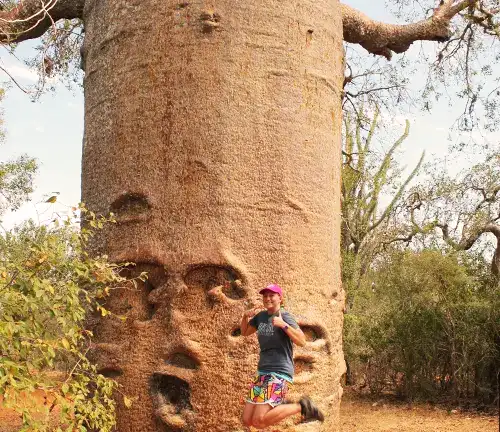
Frequently Asked Questions (FAQs)
- Why does the Madagascar Baobab Tree have a bulbous trunk?
The distinctive swollen trunk of the Madagascar Baobab Tree serves as a water storage mechanism. In arid environments, where water availability can be sporadic, the tree stores water in its trunk during the rainy season, allowing it to survive prolonged periods of drought. - What is the cultural significance of the Madagascar Baobab Tree?
The Madagascar Baobab holds profound cultural importance in Malagasy society. It is often featured in local myths and traditional practices, symbolizing endurance, strength, and resilience. Communities may also associate specific rituals or beliefs with the tree, contributing to its cultural significance. - How does the Baobab adapt to different ecosystems in Madagascar?
The adaptability of the Madagascar Baobab is remarkable. It can be found in diverse ecosystems, from dry forests to savannas. Its ability to thrive in such varied environments is attributed to its capacity to store water, modify its leaf structure, and effectively manage the challenges posed by Madagascar’s distinct ecological zones. - What are the threats to the Madagascar Baobab Tree’s survival?
Despite its resilience, the Madagascar Baobab faces threats such as habitat loss due to agricultural expansion and logging. Climate change poses an additional risk, affecting precipitation patterns and potentially disrupting the tree’s ability to store water effectively. - Are there conservation initiatives specifically focused on the Madagascar Baobab Tree?
Yes, various conservation efforts aim to protect the Madagascar Baobab. These initiatives often involve local communities, scientific organizations, and governmental bodies working together to mitigate threats, promote sustainable land use practices, and raise awareness about the importance of preserving this iconic species and its associated ecosystems.


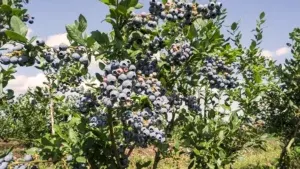

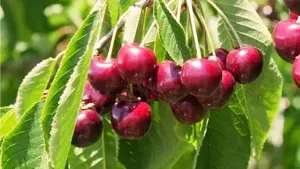


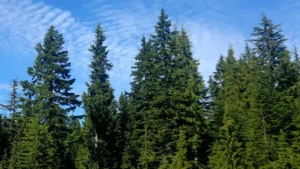

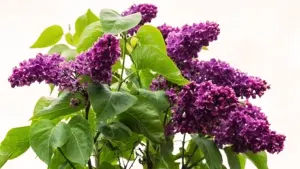
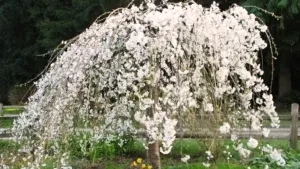
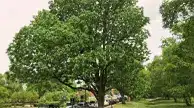


Leave your comment